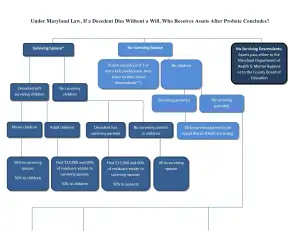Author: Charles F. Fuller
Recently, we were asked to assist a personal representative who was appointed to administer the estate of a deceased federal employee. The deceased federal employee was not married and did not have any surviving children. She had a Will that left her estate to her surviving sister. The employee had been advised to review her retirement and bank accounts and to name beneficiaries for those accounts. Unfortunately, the employee did not do this prior to her death. In fact, the deceased employee never designated a beneficiary for her Thrift Savings Plan (TSP) account. The personal representative attempted to have the TSP funds rolled over into an estate Individual Retirement Account (IRA) in order to avoid the immediate assessment of federal and state income taxes on those funds. Some TSP officials agreed that this was allowable. As the request was processed through the system, other TSP officials disagreed, and ultimately the TSP refused to roll the funds over into an estate IRA. The TSP determined that since the employee did not designate a beneficiary, only the employee’s estate was legally entitled to receive the proceeds from her TSP account. The TSP then sent a check to the personal representative made payable to the estate of the deceased employee, withholding a substantial amount of tax. The personal representative deposited the TSP check into the estate checking account. She then sought the advice of counsel. Under the existing circumstances, it was determined that there was little, if any, likelihood of success if litigation was instituted against the TSP. As a result, the estate paid a significant portion of the TSP proceeds in federal and state income taxes.
What every federal employee should learn from the above situation is that they should review their TSP account periodically to ensure that they have designated a beneficiary to receive the proceeds of that account upon their death and further, to make sure the beneficiary designation is updated if necessary. The employee should designate a primary beneficiary and also designate a contingent beneficiary in the event the primary beneficiary predeceases the employee.


